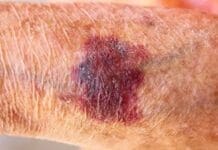By Dr. Jessica Clark, Board-Certified Dermatologist Beach Dermatology Skin Wellness Clinic
As the temperatures rise and we spend more time outdoors, summer brings a unique set of challenges for our skin. While sunshine, beach days, and fresh produce are hallmarks of the season, they can also contribute to a variety of skin issues—some of which may surprise you.
1. Sunburn and UV Damage
Sunburn is the most immediate and visible sign of UV damage. Even a single sunburn increases your risk of developing skin cancer, including melanoma. UV radiation not only causes redness and pain but also accelerates premature aging, including wrinkles, dark spots, and loss of elasticity.
Tips:
- Use a broad-spectrum sunscreen with SPF 30 or higher. Dr. Clark recommends products with zinc oxide. Not only does zinc provide the best coverage, it is also the best ingredient for sensitive skin or those concerned about chemical exposure! Now zinc comes sheer and tinted and it is actually cosmetically elegant, doesn’t feel greasy, and can actually replace your makeup if you choose a tinted variety.
- Reapply every 90 minutes, or after swimming or sweating.
- Wear sun-protective clothing, hats, and sunglasses.
- Seek shade between 10 a.m. and 4 p.m. when the sun is strongest.
2. Heat Rash (Miliaria)
Also known as “prickly heat,” heat rash occurs when sweat ducts become blocked, trapping perspiration under the skin. It commonly appears as tiny red bumps and causes itching or a stinging sensation.
Tips:
- Stay cool and avoid excessive sweating.
- Wear lightweight, breathable fabrics like cotton.
- Shower after sweating and keep your skin dry.
3. Acne Flare-Ups
Summer humidity and increased sweating can lead to clogged pores, especially in individuals prone to acne. Sunscreen—if not chosen carefully—can also exacerbate breakouts.
Tips:
- Use non-comedogenic (won’t clog pores) sunscreens and skincare products.
- Wash your face twice a day, especially after sweating.
- Consider using salicylic acid or retinoid products if breakouts worsen. Many people require prescriptions if over-the-counter products are not effective.
- Over-the-counter facial cleansing wipes can be helpful for teenagers who play sports and cannot rinse off quickly.
4. Melasma and Hyperpigmentation
Sun exposure can trigger melasma—brown patches commonly appearing on the face—and worsen existing dark spots, especially in individuals with darker skin tones.
Tips:
- In addition to sunscreen, use wide-brimmed hats and sunglasses.
- Consider using a topical antioxidant like vitamin C to help prevent pigmentation.
- Be careful with hormonal therapy. Oral birth control pills, hormone replacement therapy, and topical hormones can significantly exacerbate melasma.
- Consult a dermatologist for tailored treatments, such as prescription creams, chemical peels, microneedling, and laser.
5. Phytophotodermatitis: The “Margarita Burn”
Phytophotodermatitis is a lesser-known but increasingly common summer skin reaction caused by a combination of plant chemicals and sun exposure. Common culprits include lime, lemon, celery, parsley, and figs. When these plant-based photosensitizers come into contact with your skin and are then exposed to sunlight, a toxic reaction occurs, leading to blistering, redness, and hyperpigmentation.
It’s often dubbed the “margarita burn” because squeezing limes into drinks while outdoors is a frequent trigger.
Signs and Symptoms:
- Redness and burning sensation within 24 hours of sun exposure.
- Blistering that resembles a chemical burn.
- Irregular dark brown or gray patches that can last for weeks or months.
Tips:
- Rinse your skin thoroughly after handling citrus fruits or other photosensitizing plants.
- Avoid sun exposure immediately afterward.
- If you develop a rash or blisters, apply cool compresses and topical corticosteroids. Seek medical attention if severe.
6. Bug Bites and Contact Dermatitis
Mosquitoes, ticks, and stinging insects are more prevalent in summer. Additionally, outdoor activities increase the risk of coming into contact with irritants like poison ivy or oak.
Tips:
- Use insect repellent containing DEET or picaridin. Picaridin seems to be more effective in the panhandle.
- Wear long sleeves and pants when hiking or camping.
- Learn to recognize poisonous plants and avoid them.
- Treat bites and rashes with antihistamines or corticosteroid creams.
- “The bug bite thing” actually helps the intense swelling and inflammation from a yellow fly bite. Google it;)
- Puracyn is a spray you can buy on Amazon that is good to cool off bug bites before applying a steroid cream.
- Your dermatologist can give you a steroid shot or prescribe oral prednisone if you experience a severe reaction.
Final Thoughts
While summer offers countless opportunities to enjoy the outdoors, it’s essential to stay proactive about skin protection. If you experience any persistent or unusual skin symptoms, consult your dermatologist for personalized guidance.
We would love to personally invite you to Beach Dermatology Skin Wellness Clinic’s Grand Opening on Thursday, June 12, from 4:30-6:30 p.m. Please join us for the ribbon cutting on the ground floor of the Cadence Bank building with the Panama City Beach Chamber!! We are so excited to celebrate with our community and will have amazing raffles and discounts on products and procedure packages! Local artist and photographer John Burns will have his beautiful artwork on display throughout the office. We are also having a Galderma Dysport and Restylane Day on Friday, June 20, from 9 a.m. to noon. Galderma’s Ashley Lloyd will be available to answer all of your questions in a casual setting about Dysport, Restylane, and Sculptra products. This is the perfect day to ask questions or schedule your cosmetic treatments with Dr. Clark or our aesthetician, Lisa, before summer gets into full swing!!
Follow us at @dermadoctor79 on Instagram or @beachdermatology on Facebook to stay up to date on specials and good skin care tips!





















































